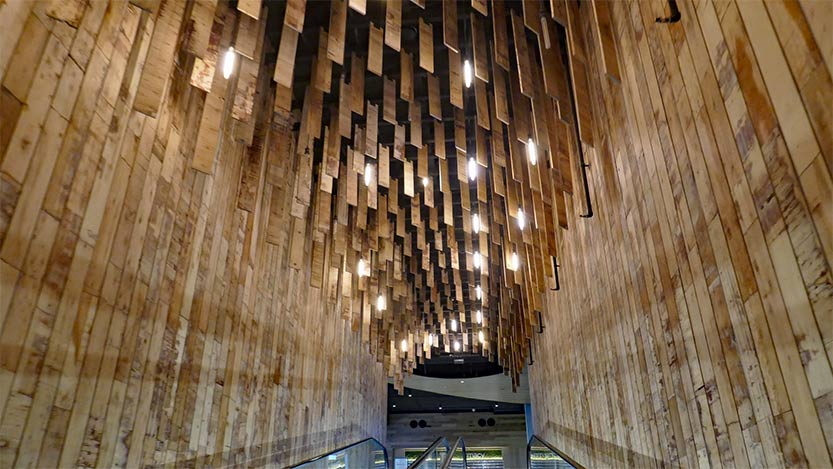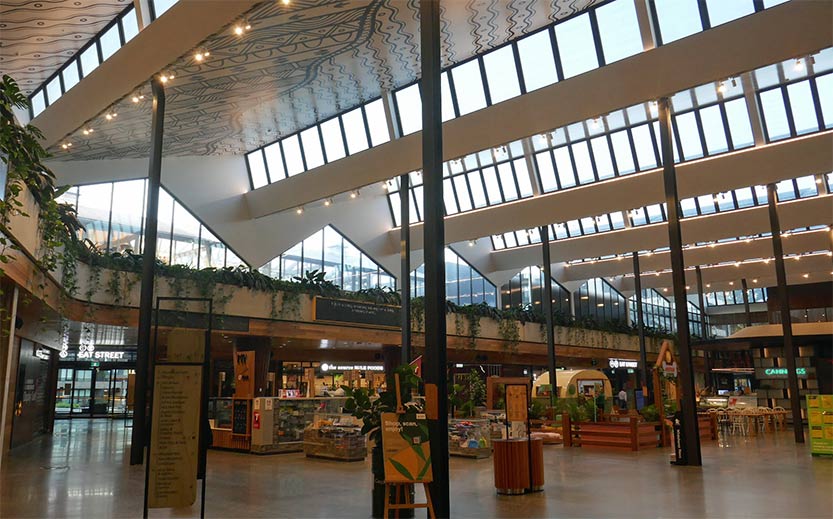Circular thinking for the built environment
“Circularity” is defined as the shift from the wasteful “take-make-consume-discard” common practice to a “cradle-to-cradle” mindset.
Such thinking can transform our environment by recognising the intrinsic value of materials throughout their life-cycle, and consciously reusing, repairing, refurbishing, and recycling the existing.
What practical steps can a community take to encourage the “circularity” mindset? A few initiatives follow:
- Source from the local economy: There are many wonderful local architects, artists, craftspeople and markets from which to choose. Commissioning/buying from local sources supports communities and minimises transportation impacts.
- Use less: Adapt and reuse existing structures where possible. Combine structural and aesthetic functions to minimise cladding. For example, use raw brass/metal taps and fixtures, which age better. Avoid toxic substances prevalent in chrome plating. Install shelving without cupboard doors, use exposed concrete and cabling to minimise wall/ floor/ ceiling finishes and shared amenities like rooftop gardens with herbs/composting and access to sunlight for everyone.
- Longevity: Beauty, cultural richness and quality are vital to good design in our city. Things being awe-inspiring in one way or another, cultivates emotional attachment which encourages care and preservation. This in turn tends to extend lifespan, truly valuing the energy and carbon invested in making them.
- Recycling and recyclability: Using quality, durable, responsibly sourced materials with recycled content that can easily be taken apart for reuse, are good strategies. Examples include using salvaged floorboards/timber, concrete containing recycled aggregate, natural paint/oil finishes so that plasterboard and timber remain compostable/biodegradable. Using bolts/nails and rebated detailing to create driplines, rather than adhesives/ silicone sealant which often contain toxic substances, helps mimimise volatile-organic-compound (VOC) emissions, creating healthy air-quality for occupants.
- Salvaged products and materials: Finding ways to integrate as many salvaged materials as possible into building and fit outs creates a positive ripple effect. It should be mandatory, or at least incentivised, to repurpose existing buildings rather than building new. Also, to salvage quality materials from demolished buildings for future reuse. Residents should advocate for the recycling of building materials to be incentivised by the City of Melbourne and maybe even incorporated in the National Construction Code. Organisations such as Close-The-Loop and Repurpose-It are making a difference.
- Materials transparency: It is vital to understand the origins of products, such as what is inside them, and what can be done with them at their end-of-life (whether compostable/biodegradable, recyclable, take-back program or potential waste stream for recycling). Many building materials contain toxic chemicals (as listed in the free “LBC Red List”). Knowing their composition in detail is the first step in ensuring harmful, toxic chemicals are phased out of building products and finishes. Diligence is needed to demand transparency, compare products, and choose the healthiest. After all, we come into contact with them every day and eventually dispose of materials, where those chemicals could harm soil, air quality, waterways, habitats, creatures and food chains.
- Emerging technologies: Sequestering carbon removed from the atmosphere in building products and natural materials such as hemp, mycelium (the root-like structure of fungi), graphene, timber and algae that capture atmospheric carbon and can be used for construction.
There is increasing availability in Australia of products with recycled content. The following lists some product examples that follow the “circularity” concept:
- SeaTex ClimateReady roller blinds contain at least 50 per cent post-consumer ocean plastic.
- ECORR utilises recycled waste materials for bases, sands, and aggregates for infrastructure projects.
- EcoPact low-carbon concrete contains reused byproducts.
- Reconophalt EPD asphalt has high recycled content.
- Low-carbon geopolymer concrete (GPC) with recycled crushed glass (replacing virgin sand) or slag and fly-ash waste-products with alkali-binders (replacing Portland-cement).
- NuTech Graphenstone lime-based paints contain graphene, absorbing carbon-dioxide when installed.
- Fungi Solutions biotechnology company “mycocycle” waste materials by naturally breaking down hydrocarbon bonds of individual pollutants/waste material, fusing them with cultivated mycelium, grown into moulded forms for construction or packaging.
Let’s ensure the products we choose to build with are healthy for all species throughout time and are kept in circulation as long as possible. •
Nicola Smith is a UK-registered-architect, longstanding CBD resident and Residents 3000 member.
Captions: Chandelier made from salvaged formwork that was used for forming the concrete in the building – one of many reused materials incorporated into the building, and Burwood Brickworks – the most sustainable shopping centre globally, which we are fortunate to have here in Melbourne.

Council endorses office tower at Flinders Lane despite querying car park demolition







 Download the Latest Edition
Download the Latest Edition